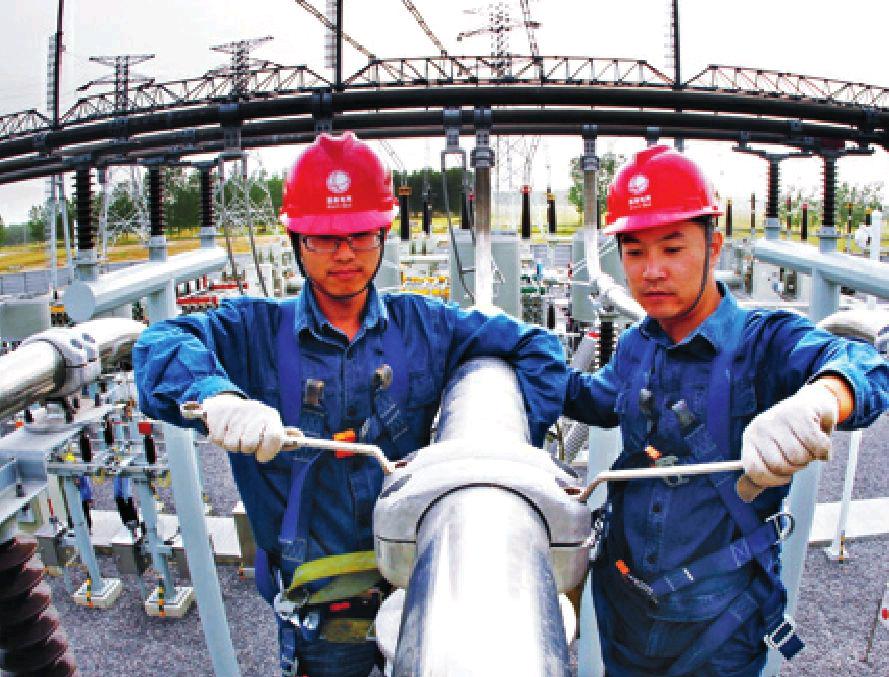Down to Brass Tacks
2014-07-28ByLanXinzhen
By+Lan+Xinzhen
On May 20, the State Council approved and forwarded the Key Tasks for Deepening Economic Structural Reforms in 2014 released by the National Development and Reform Commission, mapping out the route for the newly initiated cause.
The key tasks imply that a priority has been given to stabilizing growth, restructuring the economy and improving peoples overall livelihood, said Wang Jun, an expert with China Center for International Economic Exchanges.
Key points
Chinas economic development has shown signs of slowing down. Despite the fact that all the possible barriers obstructing sustainable growth have been included into the overall planning drawn up by the Central Government, there are concerns over how exactly to carry out the reforms.
The Key Tasks represents an answer to public concerns. According to the document, the transformation of government functions tops the agenda. The government should reduce administrative procedures, and establish a power list system, which requires the government publish a list of areas over which it has oversight and pledge not to intervene in areas which it does not hold power. In addition, the practice of “negative lists” should be widely adopted to manage market access, making sure that market participants can do whatever the law doesnt forbid.
“The essence of economic structural reform is to balance the relationship between the government and the market and let the market play a decisive role in allocating resources, or more specifically, reduce administrative intervention,” said Wang.
Another main point is the liberalization of all competitive fields. According to the Key Tasks, efforts will be made to correctly position state-owned enterprises, to push forward reforms in sectors like telecommunications, power, petroleum and natural gas, while, at the same time, respecting the law of market economy, and giving larger play to private capital.
Obviously, the Central Government has set its mind on leading social capital into more sectors to revitalize the economy, said Wang. Today, the monopoly in telecommunications, power and petroleum industries has severely hindered innovation and efficiency, and voices for change have become louder and louder.
Wang said mixed ownership will be promoted to unleash the full potential of all competitive fields. The Key Tasks have made plain that except for those indus- tries tied to national security, state-owned capital should make way for its private counterpart, thus allowing it to play a greater role in the market.endprint
Although China had, before now, launched policies to encourage non-public capital to enter these monopolized sectors several years ago, little progress has been made so far. The promotion of the mixed ownership model will act as a catalyst for change.
The fiscal and taxation system will also stand in the breach of the economic structural reform. The document suggested China will implement a transparent and standardized budget system, and make taxpayers the supervisor.
As far as local government debt is concerned, the document showed an intention to establish a debt-financing mechanism for local governments through the issuance of government bonds.
Liu yuanchun, vice Dean of the School of Economics at Renmin University of China, noted that inefficiency and a lack of supervision have been problems for a long time, and the overall implementation of a transparent and standardized budget system will allow taxpayers to know where their money goes. This will, however, not be easy and such a task will represent an uphill struggle for the ongoing economic structural reform. Since many local debts are due to expire this year and the property market is flagging across the country, the repayment of local debts will also be a big problem.
Balanced growth
Despite the continued slowing down in the past two years, the Chinese Government hasnt been on tenterhooks, as they know such a slowdown is inevitable in the process of economic restructuring. Since China began to quicken its steps toward economic structural reform in 2010, its economic development has been held back by policies such as energy conservation and emission reduction and the elimination of backward production capacity.
Nonetheless, according to calculations from some economic institutions, were Chinas economic growth to slide below 7 percent, stable and healthy development would be undermined by high unemploy- ment and reduced fiscal revenue.
Externally, international environment does not give cause for optimism. According to a study by CITIC Securities, owing to its entry into the World Trade Organization, Chinas trade surplus has been substantially increased, which had fueled high-speed growth. But since 2011, global trade has become sluggish and stagnant, exerting downward pressure on what was once the countrys most important growth engine—export.
Aside from export pressure, China is in the middle of a credit crunch. Bled by the 4-trillion-yuan ($640-billion) stimulus package in response to the global financial crisis, the debt ratio of banks soared from 109 percent in the third quarter of 2008 to 133 percent in the second quarter of 2009, and again began to experience rapid expansion at the end of 2011 after two years of inertia. Beyond that, local debts have also continued to swell. According to the National Audit Office, local liabilities amounted to 10.7 trillion yuan ($1.72 trillion) at the end of 2010, and further surged to 15.9 trillion yuan ($2.55 trillion) at the end of 2012.
Zhang Liqun, a research fellow from the Development Research Center of the State Council, suggested that it seems inevitable for China to go through the slowdown amid the economic restructuring and transformation. This seemingly paradoxical logic requires the government to control the tempo, and even slow its reform steps if necessary in order to ensure long-term viability.
Zhang said the economic structural reforms have generated positive effects, and economic growth will fluctuate around 7.5 percent. The Chinese Government will adhere to consistent macroeconomic policies to maintain economic growth within a reasonable range, and meanwhile, commit itself to the reforms, he stated.
“At the moment, its critical for the government to strike a balance between growth and reform. After all, reform is the engine for growth,” said Zhang.endprint
